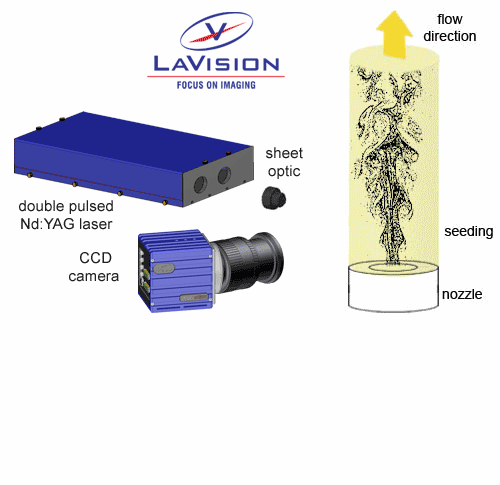Particle Image Velocimetry
Particle Image Velocimetry (PIV) measures whole velocity fields by taking
two images shortly after each other and calculating the distance individual
particles travelled within this time. From the known time difference and the
measured displacement the velocity is calculated. Since the flow can be quite
fast one has to avoid blurred images and that‘s one reason to use laser pulses.
They are only 6-10 ns long and freeze any motion. The other reason is that only
laser light can be focused into a thin enough light sheet so that only particles
in that plane are imaged. Otherwise the scattered light from particles in other
planes would make this measurement impossible. A special camera is utilized so
that it can store the first image (frame) fast enough to be ready for the second
exposure. The "dead" time between the frames when the camera is "blind" is very
short down to 100 ns.

